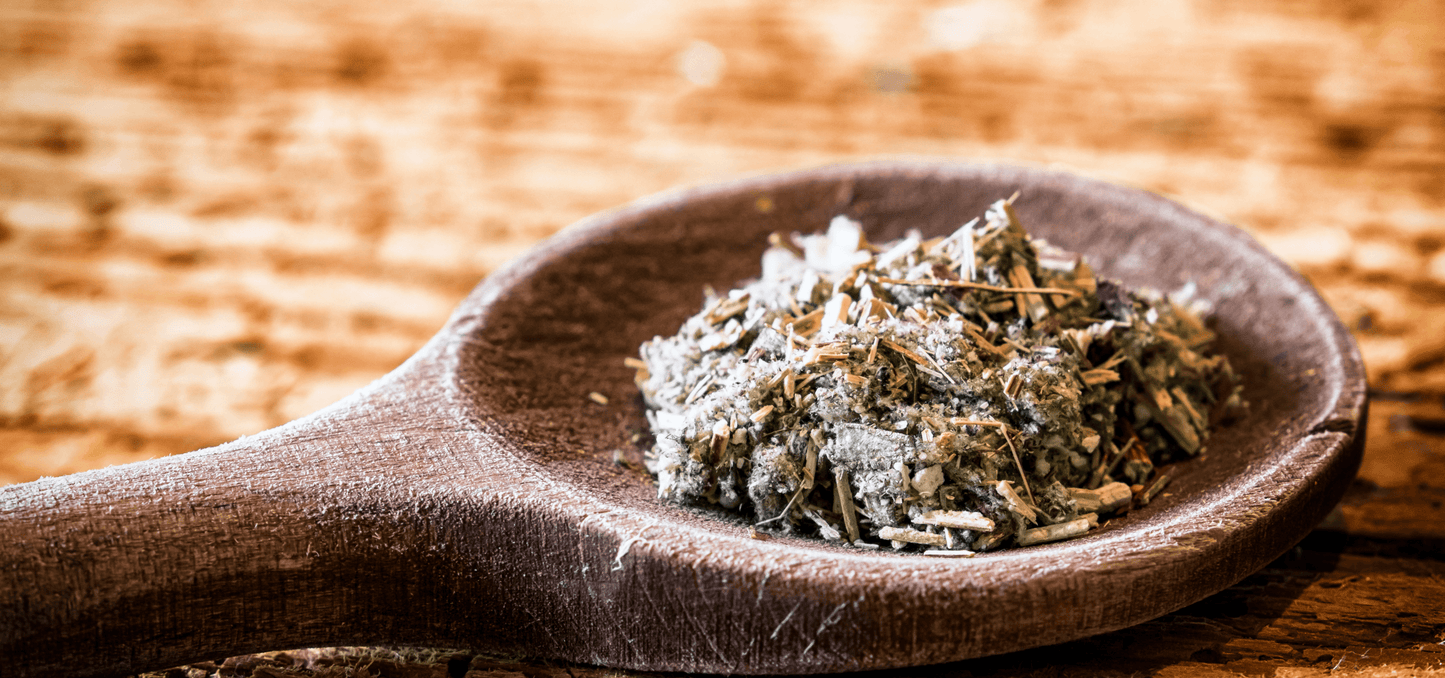
Walk past this quiet little plant and you may mistake it as nothing more than a ‘common weed’. While many do, those who stop and do little digging will quickly discover the magic that is Mugwort.
What is Mugwort?
Also known as Artemisia Vulgaris, Chrysanthemum weed, and St. John’s plant among others, Mugwort is a flowering plant native to northern Europe, Asia and parts of North America. Though commonly used for beer-making, it’s best known for its therapeutic health benefits and forms a part of traditional Chinese and Indian medicine.
During the middle ages, Mugwort was dubbed the “mother of herbs”. For centuries, several cultures have used stems, roots, and leaves for extracts, tonics, teas, powders and essential oils. The medicinal properties of Mugwort are long thought to help treat conditions like anxiety, boost menstrual health and cure digestive disorders.
Mugwort Health Benefits
Research shows Mugwort is full of active phytochemicals that have antioxidant, antibacterial, antifungal, and estrogenic effects.
Alleviates Arthritis Symptoms
A 2016 review suggested that moxibustion may be a promising alternative in treating knee osteoarthritis. A year later in 2017, sufficient evidence was found indicating that moxibustion is effective in reducing pain and symptom management in those with osteoarthritis in the knee.
Supports Female Reproductive Health
In Chinese medicine, Mugwort is used to reduce heavy menstrual bleeding and pain by helping increase blood circulation to the pelvic region. It has also been used to start or regulate cycles, helping those who suffer from irregular periods.
Interestingly, a 2009 study on 51 perimenopausal and postmenopausal women found that moxibustion may reduce the severity and frequency of hot flushes.
It May Support Digestive Health
Mugwort has been traditionally used as a remedy for digestive issues including:
- Indigestion
- Constipation
- Stomach acidity
- Diarrhoea
- Low Appetite
- Colic
Potential Cancer Treatment?
While the evidence is currently limited, some studies show promise of Mugwort having anti-cancer benefits. A 2013 study pointed out the ability of Californian Mugwort to kill cancerous cells. And a more recent 2018 study found that it induces ‘antitumour effects’. The same year, another study found it can relieve the side effects of chemotherapy or radiotherapy and improve the quality of life in cancer patients.
An Ancient ‘Dream Tea’ With Spiritual and Mental Health Benefits
Traditionally, Mugwort has been used for spiritual cleansing, inducing trances, intuition development and elevating psychic awareness. Many report that this long-forgotten sleep tea adds colours and senses (smell, taste, touch even sounds) to dreams.
Long known as a ‘visionary herb’, Mugwort is a potent tool for dream work. It can magnify the vividness of dreams, improve recall, reduce the wake-up frequency, and even induce lucid dreams.
It’s important to know that dreaming is more than just a cinematic escape from the conscious world. In recent years, researchers have begun tapping into dreaming as a means of psychological therapy, with emotional healing and mood-enhancing benefits. It can also help balance the conscious and subconscious mind, boost creativity, and bring increased awareness of oneself.
Dreaming occurs during deep sleep (REM stages), where brain activity is heightened. The 5th and final phase of REM is the period in which dreams are at their most vivid and is also the peak of emotional activity in our brains. Sleep researchers have cited several benefits to getting adequate, undisturbed amounts of REM, including a lowered risk of neurodegenerative diseases and depression, better emotional resolve, and being more adept at handling stress during the day.
The vividness and duration of dreams are a strong measure of the quality of REM. People who suffer from broken or diminished deep sleep often notice an inability to recall dreams, which is often accompanied by feelings of exhaustion, brain fog, and irritability. Which is why Mugwort tea makes for an excellent evening elixir to improve overall mental well-being and cognitive health.
Moxibustion
Moxibustion is a common treatment used in traditional Chinese medicine. It involves rolling Mugwort into sticks and burning them to release their potent properties. A herbal health practitioner then waves it above the skin at acupuncture points. Several recent studies have demonstrated Mugwort’s health benefits via moxibustion, giving rise to its popularity as a herbal medicine.
How to Brew Mugwort Herbal Tea
While Mugwort herbal tea can be consumed any time of day, we recommend drinking it in the evening to fully experience its soothing properties and dream-enhancing effects. It is also important to remember that Mugwort tea works best alongside a healthy lifestyle. Poor diet or sleep hygiene cannot be masked by any amount of tea or supplements.
With that said, here’s how to brew your ‘Dream Tea’.
Simply steep 1-2 teaspoons of Mugwort leaves in 240ml of boiling water for 5-15 minutes.
We recommend using a tea basket as it improves the circulation of the leaves, yielding better taste and potency. The longer you steep your tea, the more robust the flavour.
Remove the strainer and, if you like, add a little honey or maple syrup for a slightly sweeter taste. Drink 30 minutes before bed for a night of deep, restful sleep filled with colourful and profound dreams.
Fancy trying Mugwort for improved sleep? Visit our shop to purchase Mugwort dried herb.